#wirelesstechnology
Photo

Today, our founder spotlight celebrates a phenomenal woman.
Tap on this👉 link to read all about Hedy Lamarr, Hollywood icon and mother of wireless technology.
3 notes
·
View notes
Text
Beyond the Cable: The Future of Wireless Audio Solutions
The wireless audio device market has witnessed significant growth and evolution in recent years, driven by technological advancements and shifting consumer preferences. From wireless headphones to smart speakers, the demand for untethered audio solutions continues to rise across various industries and consumer segments. This article delves into the dynamic landscape of wireless audio devices, exploring key market trends, major players, technological innovations, consumer demands, regulatory challenges, and future projections. By examining the factors shaping the market, we aim to provide a comprehensive overview of this rapidly expanding industry.
As technology continues to advance, the market for wireless audio devices is constantly evolving. In addition to Bluetooth advancements, other technologies such as Wi-Fi and NFC have also made a significant impact on the market. These innovations have led to improved sound quality, longer battery life, and increased connectivity options for consumers. When it comes to choosing wireless audio devices, factors such as price, brand reputation, design, and compatibility with other devices play a crucial role in influencing consumer preferences. Furthermore, companies operating in this market face regulatory challenges related to wireless spectrum allocation, product safety standards, and intellectual property rights. Despite these challenges, the demand for wireless audio devices continues to grow as consumers seek convenience and flexibility in their audio experiences.
Introduction to Wireless Audio Devices
Definition and Evolution
Wireless audio devices are the cool kids of the audio world, freeing us from the shackles of tangled cables and letting us dance around like nobody's watching. They've come a long way from their humble beginnings, evolving from chunky, unreliable gadgets to sleek, high-tech wonders.
Types of Wireless Audio Devices
From Bluetooth speakers that pump out tunes at beach parties to true wireless earbuds that discreetly play your guilty pleasure songs, the world of wireless audio is as diverse as a Spotify playlist. Whether you're into over-ear headphones, portable speakers, or even smart home devices that double as DJ's, there's a wireless audio device for everyone.
Market Trends and Overview
Current Market Size and Growth
The wireless audio device market is hotter than a freshly microwaved bag of popcorn, with soaring sales numbers and a growth rate that would make a cheetah jealous. As more people ditch the cords and embrace the wireless revolution, the market keeps expanding faster than your Spotify playlist.
Global Market Analysis
The global wireless audio device market is like a big, noisy party where everyone's invited. From the bustling streets of New York to the serene beaches of Bali, people everywhere are grooving to their favorite tunes wirelessly. With Asia-Pacific leading the dance and North America not far behind, the market shows no signs of slowing down.
Key Players and Competitors
Leading Companies in the Market
In the world of wireless audio devices, there are some big players strutting their stuff like peacocks at a music festival. Companies like Apple, Sony, and Bose are the headliners, wowing the crowds with their innovative tech and sleek designs.
Competitive Landscape
Competition in the wireless audio device market is fierce, like a battle of the bands where only the best survive. With new companies popping up faster than you can say "Alexa, play my workout playlist," the market is a dynamic playground where innovation and style duke it out for the top spot.
Growth Drivers and Opportunities
Increasing Demand for Smart Home Devices
As homes get smarter than a math prodigy, the demand for wireless audio devices that seamlessly integrate into our connected lives is skyrocketing. From talking speakers that answer your burning questions to soundbars that make movie nights epic, smart home devices are driving the wireless audio market forward.
Rising Popularity of Wireless Headphones
Say goodbye to tangled headphone cords that have a mind of their own and hello to the freedom of wireless headphones. Whether you're working out at the gym, commuting on a crowded bus, or just chilling on the couch, wireless headphones are the ultimate accessory for the modern music lover. With their convenience and style, it's no wonder they're flying off the shelves faster than avocado toast at a hipster cafe.5. Technological Innovations in Wireless Audio Devices
Advancements in Bluetooth Technology
Bluetooth technology has come a long way from its early days of spotty connections and limited range. With the advent of Bluetooth 5.0 and beyond, wireless audio devices now boast improved connectivity, longer battery life, and enhanced sound quality. Say goodbye to the days of constant re-pairing and hello to seamless wireless audio experiences.
Noise-Cancellation Features
In a world filled with background noise and distractions, noise-cancellation features have become a must-have for wireless audio devices. Whether you're on a crowded subway or working in a bustling café, these features help drown out the chaos and immerse you in your favourite tunes or podcasts. It's like creating a personal bubble of serenity in the midst of chaos.
6. Consumer Preferences and Demands
Preference for Portability and Convenience
Gone are the days of bulky headphones and tangled cords. Today's consumers crave portability and convenience in their wireless audio devices. From sleek earbuds that fit in your pocket to stylish headphones that fold up neatly, the emphasis is on on-the-go usability without sacrificing style or comfort.
Impact of Audio Quality on Purchase Decisions
When it comes to choosing wireless audio devices, audio quality reigns supreme. From crisp highs to booming bass, consumers want a listening experience that makes them feel like they're front row at a concert. Whether it's for music, podcasts, or conference calls, top-notch audio quality can make or break a purchase decision.
7. Regulatory Landscape and Challenges
Compliance Standards for Wireless Audio Devices
Navigating the regulatory landscape for wireless audio devices can be a bit like untangling a mess of cords. From FCC certifications to Bluetooth SIG compliance, manufacturers must ensure their devices meet a myriad of standards to hit the market. It's like a high-stakes game of regulatory bingo, where one wrong move could mean game over.
Challenges in Spectrum Allocation
As the demand for wireless audio devices continues to soar, the fight for spectrum allocation has become increasingly fierce. With limited frequencies available for wireless communication, manufacturers must jockey for prime real estate to ensure their devices can operate seamlessly. It's like a game of musical chairs, but with radio waves and billions of dollars on the line.
8. Future Outlook and Projections
Emerging Trends in Wireless Audio Technology
The future of wireless audio technology is rife with exciting possibilities. From AI-powered personal assistants to bone conduction headphones, the next wave of innovations promises to revolutionize how we listen to and interact with audio. It's like stepping into a sci-fi movie where the soundtrack is custom-tailored to your every move.
Market Forecast and Growth Potential
With the wireless audio device market showing no signs of slowing down, analysts predict continued growth and expansion in the coming years. From increased adoption of true wireless earbuds to advancements in spatial audio technology, the future looks bright for consumers seeking the ultimate wireless audio experience. It's like being at a rock concert where the volume keeps cranking up, and the crowd can't get enough.In conclusion, the wireless audio device market presents a promising landscape filled with opportunities for innovation and growth. As technology continues to evolve and consumer preferences evolve, companies in this sector must stay agile and responsive to meet the changing demands of the market. With a focus on quality, convenience, and cutting-edge features, the future of wireless audio devices holds immense potential for continued advancement and market expansion.
FAQ
What are the main types of wireless audio devices in the market?
How have technological innovations, such as Bluetooth advancements, impacted the wireless audio device market?
What factors influence consumer preferences when choosing wireless audio devices?
What are some of the regulatory challenges faced by companies operating in the wireless audio device market?
#WirelessAudio#AudioTechnology#Connectivity#WirelessSound#AudioInnovation#TechTrends#WirelessDevices#AudioMarket#Technology#BluetoothAudio#WirelessHeadphones#SpeakerTech#WirelessStreaming#AudioQuality#Innovation#WirelessTechnology#SoundExperience#TechMarket#WirelessEarbuds#AudioRevolution#SmartDevices#WirelessSolutions#AudioConnectivity#DigitalAudio#WirelessSpeakers#AudioIndustry#TechInnovation#WirelessHeadsets#AudioDevices#DigitalSound
0 notes
Text

Recharaeable Keyboard and Mouse
Intelligent power saving , long battery life,2-3 Hours Charge,1 Months standby
Applicable to various systems
#RecharaeableKeyboard#RecharaeableMouse#WirelessTechnology#TechGadgets#ConvenientAccessories#LongLastingBattery#EcoFriendlyProducts#WirelessKeyboardMouse#SustainableTech#ModernOfficeEssentials
0 notes
Text
Is eSIM better than physical SIM?
This article looks at a simple question: 'Is eSIM better than physical SIM?' We're talking about how phones connect to the internet. We'll check out the good and not-so-good things about both. Come along to find out if the eSIM is really better than the regular physical SIM card we're used to.

Is eSIM better than physical SIM?
Understanding eSIM and Physical SIM Cards
Define eSIM and physical SIM cards
Physical SIM card is a module which is smaller and can be inserted or removed from the mobile. Information is written on the physical SIM card such as its size i.e. how many contacts can be saved on it and the ICCID code of 18 to 22 digits is written.
A SIM that is already digitally built into the phone, completely eliminating the effects of physical SIM card loss and misuse, and is pre-programmed with carrier information. Users can switch between more than 4 eSIM profiles, providing flexibility and convenience.
Difference Between eSIM and physical SIM cards
eSIM cannot be removed but physical SIM can be removed.
The network can be changed easily in eSIM but the network cannot be changed in physical SIM.
Any plan from any network provider can be activated in eSIM, but to change the network in physical SIM, a new SIM card will have to be ordered.
eSIM is inbuilt in the phone while physical SIM comes in three sizes: standard, micro and nano.
Advantages of eSIM
Due to its flexibility, we can switch from one mobile network to another without ordering a new physical SIM card.
eSIM eliminates the need for a physical SIM card, allowing manufacturers to make their mobiles with even slimmer and compact designs.
eSIM can be activated and mobile plans can be managed at home without visiting the offline stores of mobile carriers, which improves the user experience.
Advantages of physical SIM
Apple iPhone is the only major brand which has eSIM inbuilt but till now physical SIM cards are king in most of the budget mobile brands like Realme, Redmi, Techno.
Buying a new SIM from the offline shop of mobile carriers and inserting it is a very easy process.
If the physical SIM card gets damaged or lost, you can go to the mobile carriers and get it back for use with a new physical SIM card with the same number.
You can activate the services of physical SIM card without any network connection. This will be beneficial when the internet connection is within a limited range.
[click to continue reading...]
#esim card#PhysicalSIM#mobiletechnology#sim card#telecommunications#DigitalTransformation#mobile devices#wirelesstechnology#eSIMvsPhysicalSIM#mobile connectivity#TechnologyDebate#SIMCardComparison#eSIMAdvantages#mobileinnovation#techcomparison#DigitalSIM#eSIMBenefits#TelecomTrends#FutureOfConnectivity#MobileDevicesComparison
1 note
·
View note
Photo
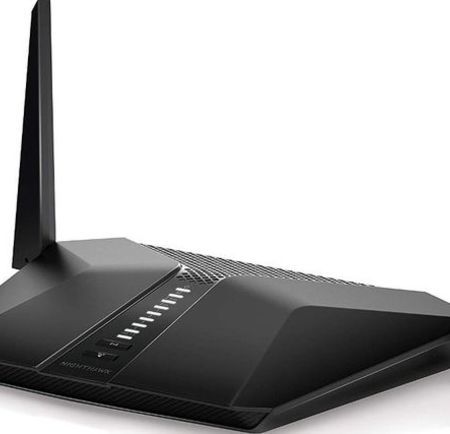
The Best Dual-Band Routers of 2019
Say goodbye to buffering and hello to seamless streaming with these top-rated dual-band routers of 2019.
0 notes
Text
Unraveling the Mysteries of DMR: A Comprehensive Guide to Digital Mobile Radio

If you have ever come across the acronym DMR and found yourself scratching your head, wondering what it stands for, you're not alone. DMR, short for Digital Mobile Radio, is a term that has gained popularity in recent years. This article aims to provide you with a clear understanding of what DMR really means and its significance in the realm of communication. So, let's explore the world of DMR and uncover its meaning together.
Get DMR Radio Today!
Overview
Digital Mobile Radio (DMR) is a digital radio communication technology that provides reliable and efficient communication for various industries and sectors. It offers numerous features and benefits over traditional analog communication systems, making it a popular choice for public safety agencies, commercial enterprises, and amateur radio enthusiasts. This article will delve into the definition, history, technical aspects, standards, features, applications, benefits, implementations, and future prospects of DMR.
Definition of DMR
DMR stands for Digital Mobile Radio. It is a digital radio communication technology that enables the transmission of voice, data, and other forms of communication over an encrypted digital network. DMR utilizes digital modulation techniques to convert audio signals into digital format for transmission. The digital signals are then decoded by the receiving device, ensuring clear and reliable communication. It offers various features such as text messaging, voice encryption, GPS and location tracking, and roaming capabilities.
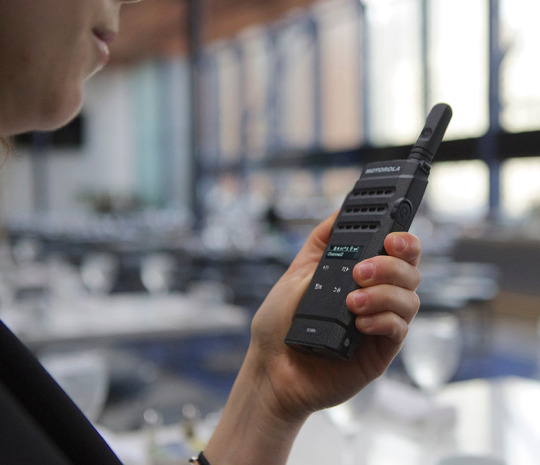
History of DMR
DMR technology was developed in the early 2000s as an open digital radio standard by the European Telecommunications Standards Institute (ETSI). It aimed to provide a more efficient and reliable alternative to traditional analog communication systems. The timeline of DMR milestones includes the release of the first DMR standard in 2005, the formation of the DMR Association in 2008, the introduction of DMR Tier 3 in 2010, and various advancements in the 2010s.
Technical Aspects of DMR
DMR uses a digital modulation technique called frequency-shift keying (FSK) and operates on UHF and VHF frequency bands. Compared to analog communication, DMR provides better voice quality, enhanced coverage, increased channel capacity, and improved resistance to noise and interference. It also enables integration of data services and advanced features.
DMR Standards
The DMR Association develops standards ensuring interoperability and technical specifications adherence. DMR is divided into three tiers based on system complexity and functionality, each catering to different communication needs.
DMR Features
Key features of DMR include text messaging, voice encryption, GPS and location tracking, and roaming capability, enhancing communication efficiency, security, and flexibility.
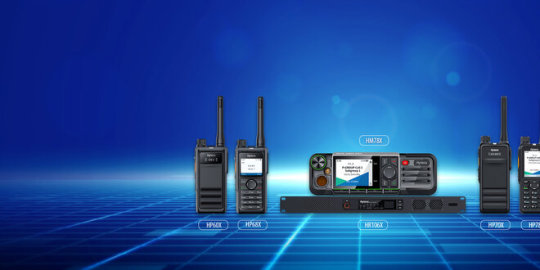
DMR Applications
DMR is widely used in public safety, commercial and industrial sectors, amateur radio, and transportation, improving communication, operational efficiency, and safety.
Benefits of DMR
DMR offers improved audio quality, enhanced coverage and range, increased channel capacity, and cost-effectiveness, making it a superior choice over traditional analog systems.
DMR Implementations
Numerous manufacturers produce DMR-compliant equipment, and various organizations build and operate DMR networks with a robust infrastructure.
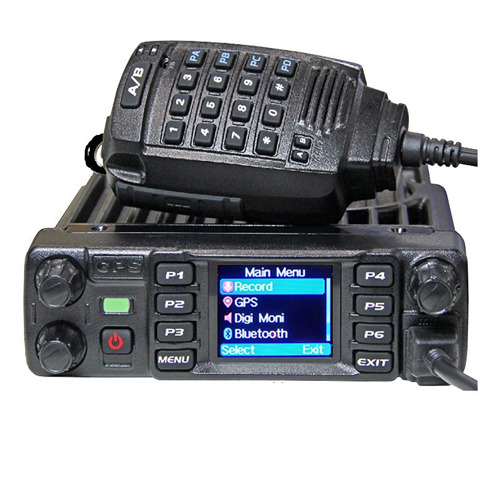
Conclusion
Digital Mobile Radio (DMR) revolutionizes communication across sectors with its reliable, secure, and advanced digital technology. It continues to evolve, promising enhanced connectivity and efficiency for all users.
#DigitalMobileRadio#DMRTechnology#RadioCommunication#PublicSafetyCommunication#AmateurRadio#DigitalRadioStandards#DMRHistory#WirelessTechnology#DMRFeatures#RadioInnovation
1 note
·
View note
Text
Wireless Network Jammers: What They Are, How They Work, and Their Implications?

In a world that relies heavily on wireless connectivity, the concept of a wireless network jammer may sound both intriguing and concerning. These devices have the power to disrupt and disable wireless networks, creating a shield against unwanted signals or causing havoc when misused. In this article, we will delve into the realm of wireless network jammers, exploring their functionality, legality, potential applications, and the importance of understanding the technology behind them.
What Is a Wireless Network Jammer?
A wireless network jammer, often simply referred to as a “jammer,” is a device designed to emit radio frequency signals that interfere with, disrupt, or disable wireless communication. They come in various forms, from handheld devices to larger, more powerful systems. Jammers operate on the principle of emitting signals at the same frequency as the target wireless network, thereby causing interference and rendering the network inoperable.
How Do Wireless Network Jammers Work?

Frequency Blocking: Jammers generate signals at the same frequency as the target network, effectively blocking legitimate communication signals.
Signal Overload: Some jammers flood the target network with excessive signals, overwhelming it and causing network congestion.
Noise Generation: Jammers produce noise or interference, disrupting the clarity of signals and making them indecipherable.
Disruption of Handshakes: Wireless networks often use a series of handshakes to establish connections. Jammers interrupt these handshakes, preventing devices from connecting.
Legality and Regulation
The use of wireless network jammers raises significant legal and ethical concerns. Most countries strictly regulate or outright prohibit the use of jammers due to the potential for harm. Some key legal considerations include:
Federal Communications Commission (FCC): In the United States, the FCC strictly regulates wireless network jammers and their use, classifying them as illegal devices.
Emergency Services: Jamming wireless networks, particularly in emergency situations, can have life-threatening consequences. Thus, jamming is a severe offense.
Privacy Concerns: Jammers can be used to invade the privacy of individuals by blocking signals from their mobile devices or drones. This invasion of privacy is a breach of the law in many jurisdictions.
Implications and Misuse

Security Risks: Jammers can be employed by criminals to disable security systems, surveillance cameras, or alarm systems, making them a tool for burglaries or break-ins.
Economic Impact: Jamming can disrupt businesses that rely on wireless communication, resulting in financial losses.
Public Safety: The use of jammers can jeopardize public safety by interfering with critical communication systems, such as those used by first responders.
Privacy Invasion: The misuse of jammers can infringe on the privacy of individuals by blocking signals from their smartphones or other personal devices.
Applications in Controlled Environments
While the misuse of jammers is a significant concern, there are controlled and legal environments where jamming technology has legitimate applications:
Correctional Facilities: Jammers are used in prisons to prevent inmates from using cell phones for illegal activities.
Theaters and Lecture Halls: Jammers can be employed to prevent disruptions caused by mobile phones in theaters or lecture halls.
Military and Defense: The military uses jammers to disrupt enemy communication and disable improvised explosive devices (IEDs).
Secure Meetings: In high-security environments, jammers can ensure that confidential meetings remain secure from eavesdropping.
Anti-Jamming Technology
Countermeasures to combat wireless network jammers have been developed, and they play a crucial role in maintaining network security. These anti-jamming technologies include:
Frequency Hopping: Systems that rapidly change frequencies make it difficult for jammers to pinpoint and interfere with a specific frequency.
Encryption: Securing data with strong encryption ensures that even if the signal is jammed, the data remains protected.
Beamforming: By focusing signals in specific directions, beamforming reduces the impact of interference.
Advanced Receiver Design: Improving receiver sensitivity and selectivity can mitigate the effects of interference.
The Future of Wireless Network Security

Improved Anti-Jamming Measures: Anti-Jamming technologies will become more sophisticated and robust, ensuring the resilience of wireless networks.
Legislation and Regulation: Governments will continue to strengthen laws and regulations related to jamming technology to prevent misuse.
Emerging Threats: As technology evolves, new threats and vulnerabilities may emerge, necessitating proactive security measures.
Conclusion
Wireless network jammers are complex and powerful devices with both legal and illegal applications. Understanding the technology behind jammers, their implications, and the importance of anti-jamming measures is crucial in a world reliant on wireless communication. While legitimate uses exist, such as in correctional facilities and military operations, the potential for misuse and harm underscores the need for strict regulation and ethical considerations.
The future of wireless network security will depend on the continual evolution of both jammers and the anti-jamming technologies that safeguard our connectivity. As technology and wireless networks become increasingly integral to our daily lives, the balance between security and accessibility is of paramount importance. With the continuous development of anti-jamming technologies and evolving legislation, we can hope for a future where the benefits of wireless communication are maximized, while the threats of wireless network jammers are minimized. Striking this balance ensures that our wireless world remains connected, secure, and free from unwarranted interference.
Also Read: 6 Most Popular Desktop Operating Systems in the World
#AntiJammingTech#ConnectivityChallenges#TechEthics#FutureWireless#WirelessTechnology#NetworkJamming#CyberSecurity
0 notes
Text
Advancements and unmet needs in pacemakers and implantable cardioverter defibrillators (ICDs).
Pacemakers and implantable cardioverter defibrillators (ICDs) are medical devices that have revolutionized the treatment of heart rhythm disorders. They provide electrical stimulation to the heart muscles, helping regulate the heart rate and rhythm. Over the years, these devices have undergone significant advancements, making them more effective and convenient for patients.
Write to us at [email protected] Learn how GRG Health is helping clients gather more in-depth market-level information on such topics.
One of the most significant advancements in recent years is the incorporation of wireless technology. Pacemakers and ICDs can now communicate with smartphones and tablets, allowing doctors to monitor patients remotely. This is particularly beneficial for patients who live in remote areas or have difficulty visiting the hospital frequently.
Another significant development is the availability of leadless devices. These devices do not require leads, reducing the risk of infection and eliminating the need for lead extraction surgery. Additionally, certain pacemakers and ICDs are now designed to be MRI-compatible, which was previously a concern due to potential interference with the device's functionality.
While these advancements have been beneficial, this field still has unmet needs. For example, pacemakers and ICDs require surgery to replace the batteries, which can be inconvenient and risky for patients. There is a need for improved battery life, which would reduce the frequency of battery replacement surgeries.
Another unmet need is better detection and treatment of arrhythmias. While pacemakers and ICDs are effective at treating heart rhythm disorders, they do not always detect all arrhythmias and may not provide optimal therapy for certain patients. As such, there is a need for improved algorithms and programming of these devices to better detect and treat arrhythmias.
Finally, minimizing complications associated with the implantation of these devices is also an unmet need. Implantation can cause complications such as infection, lead dislodgement, and bleeding. There is a need for improved techniques and materials that can reduce the risk of complications during implantation.
The market for pacemakers and ICDs is dominated by key players such as Medtronic, Abbott Laboratories, Boston Scientific Corporation, Biotronik SE & Co. KG, and LivaNova PLC. These companies continue to invest in research and development, bringing new and innovative products to the market.
There are several types of pacemakers and ICDs available, including single-chamber pacemakers, dual-chamber pacemakers, and biventricular pacemakers. Similarly, single-chamber ICDs, dual-chamber ICDs, and cardiac resynchronization therapy (CRT) ICDs are also available. The choice of device depends on the patient's specific condition and needs.
In conclusion, pacemakers and ICDs have come a long way in the past few decades, providing a safe and effective treatment for heart rhythm disorders. While there are still unmet needs in this field, continued advancements in technology and research will help to improve patient outcomes and reduce complications associated with these devices.
Visit our website now: https://www.grgonline.com/
#pacemakers#ICDs#cardiology#healthtech#wirelesstechnology#arrhythmia#heartdisorders#healthcare#innovation#patientcare
0 notes
Text

Best 7 Wireless Earbuds 2023 | Under $30 – Top 7 of The Market
Introduction- Best 7 Wireless Earbuds 2023
Hi dear, welcome to the new blog post of Best 7 Wireless Earbuds 2023 In this article, I want to share the best-selling top seven Bluetooth wireless earbuds/headphones. I’ll share the price, discount, and features, and I tried to compare each other wireless earbuds. You can decide and get the best quality wireless earbuds. After reading and observing this article you can make the right decision.
Read More>>
#Best7WirelessEarbuds#BestEarbuds#bestheadphones#earbuds#earbudswireless#headphones#wirelessearphones#wirelessheadphones#wirelesstechnology#Best7WirelessEarbuds2023#bestearbudsunder$30#bluetoothearbuds#bluetoothheadphones#top7earbudsonmarket#amazonreview#amazon#amazonelectronicproduct
1 note
·
View note
Text
Capgemini is hiring freshers as WiFi Developers in Bangalore | Placement Officer
Capgemini is hiring freshers as WiFi Developers in Bangalore | Placement Officer

Capgemini is currently hiring freshers for the role of WiFi Developers in Bangalore. Join our team and contribute to the development of software for WiFi products, including Access Points and Wireless LAN Controllers. This role requires working knowledge of HostAP Daemon software, understanding of WiFi protocols and security, and basic IP data networking skills. Experience with SRS and Design documents, field debugging of WiFi issues, and managing a small team of engineers are highly valued. Strong programming skills in C and familiarity with the 802.11n/ac standard are essential. Secondary skills include familiarity with WiFi chipset SDKs and the Linux wifi stack. At Capgemini, we are a global leader in technology solutions, dedicated to unleashing human energy through technology for a sustainable future. Join us and shape the future you want. Apply now!
About the job
Job Description· Development of software for WiFi products such as Access Points and Wireless LAN Controllers.
Working knowledge of HostAP Daemon software and its interfaces· Working knowledge of 11ax a plus, if not at least theoretical understanding of 11ax.
Deep understanding of the 802.11 management plane (protocols), WiFi security (WPA2/3), beam forming, band steering, MIMO, Channel Bandwidth, MCS rates etc.
Basic IP data networking.
Contribution towards SRS and Design documents, and is mandatory.
Field debugging of WiFi issues an added plus.
Should have managed at least a small team of engineers. Primary Skills· Very strong in C programming· Working knowledge of the 802.11n/ac standard. Read More
#CapgeminiJobs#WiFiDevelopers#FreshersHiring#BangaloreJobs#TechnologyCareers#SoftwareDevelopment#NetworkingSkills#CProgramming#LinuxProgramming#WirelessTechnology#FutureofTechnology#CapgeminiCulture#TransformingBusinesses#InnovationandTechnology#GlobalLeader#UnleashHumanEnergy#ShapeYourFuture
0 notes
Text
"Is T-Mobile's New 5G Network Worth the Hype? Here's What You Need to Know"
Read the full article

#TMobile5G#5GNetwork#WirelessTechnology#NextGenNetwork#MobileConnectivity#FastInternet#Telecommunications#MobileData#cellulartechnology
0 notes
Photo

Choosing the right wireless infrastructure for your business isn't easy - but we've got you covered! With our expert knowledge, we can help you select the right wireless access point for your business. Contact us today to learn more!
#wireless#accesspoint#networking#wirelessaccesspoint#technology#wifi#wifirouter#wirelesstechnology#wirelessnetworks#standaloneap#wirelessaccesscontrol#skylarkinformationtechnologies#accesscontrol#networksolutions#cloudcomputing#india#chennai#bangalore#mumbai#singapore#itinfrastructure#iitinfrastructuredevelopment#skylark
0 notes
Text
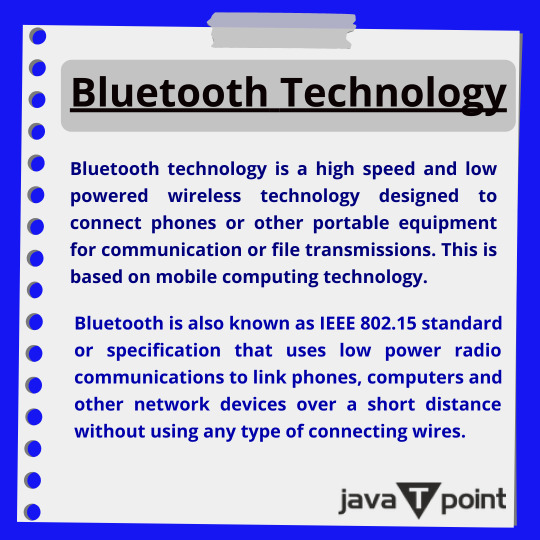
0 notes
Video
A scale model made to show wireless data transfer technologies used in today's world
#maadhucreatives#industrialmodel#industrial#scalemodel#wirelesstechnology#datatransfertechnologies#datatransfer#miniature#miniaturemodel#modelmaking#3dmodel
0 notes
Text

Gather real-world and real-time health data and integrate it into a patient's medical record.
Wearable-EHR interface represents new innovations, providing the opportunity to collect real-life and real-time health data with integration into a patient’s medical record.
Understand more about the Wearable Technology
#Techblocks#techblocksinnovation#techblocksretail#techblockshealthcare#productmarketing#wearabledevices#wearabletechnology#wearabletech#medicaltechnology#retailtechnology#bluetoothlowenergy#ble#bluetooth#smartdevice#wirelesstechnology
0 notes
Photo
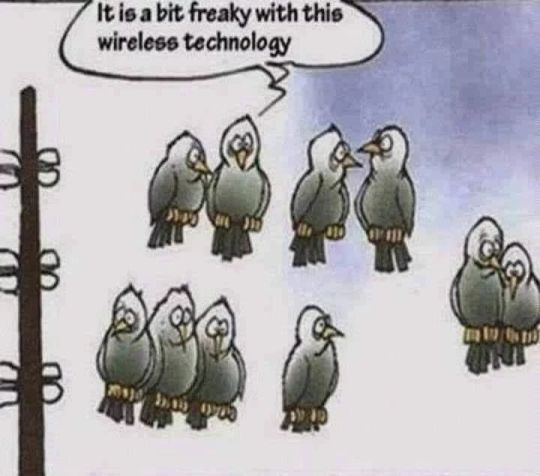
#wirelesstechnology https://www.instagram.com/p/ChFFwpfu6We/?igshid=NGJjMDIxMWI=
0 notes